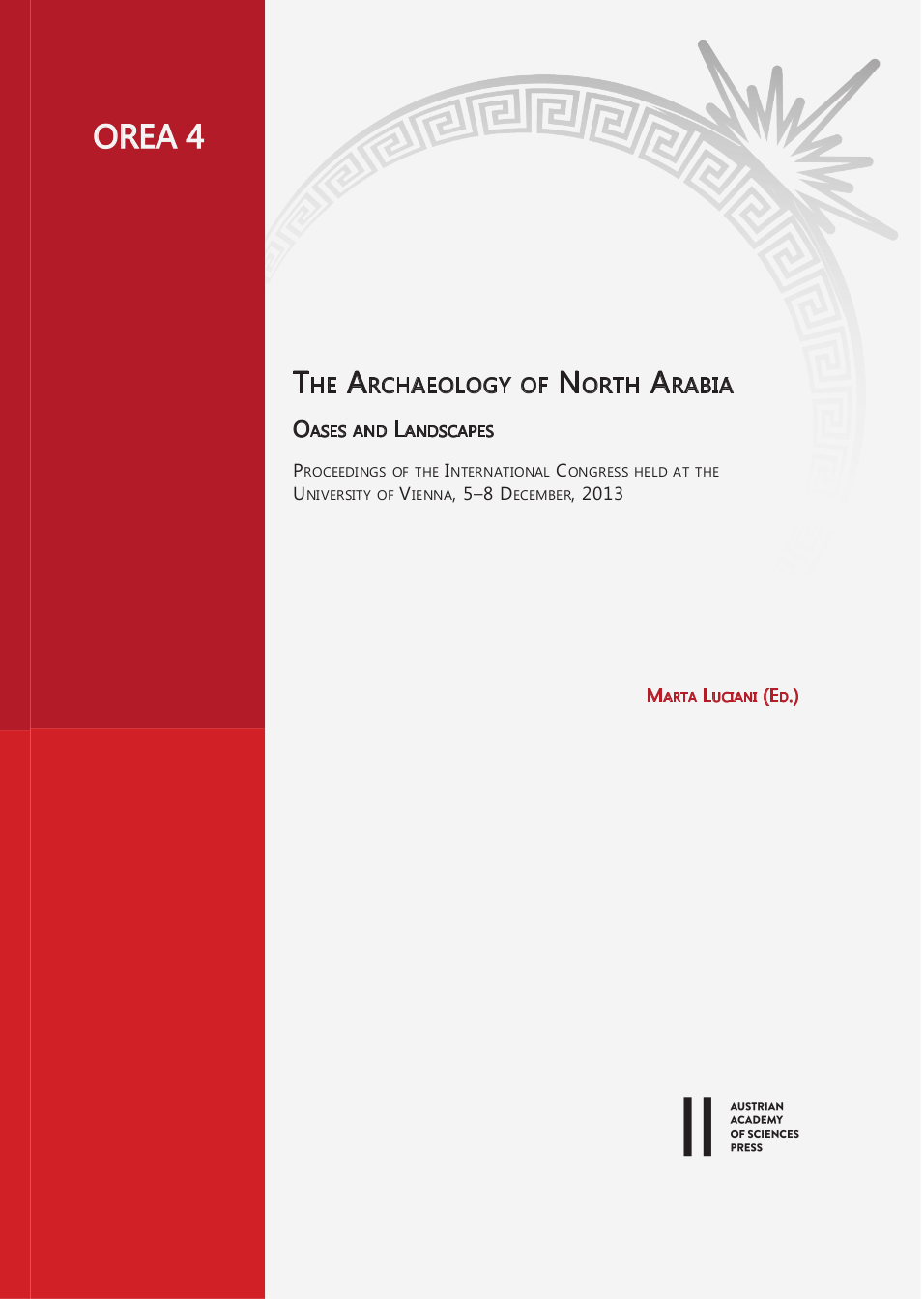
The Archaeology of North Arabia, Oases and Landscapes, pp. 135-174, 2016/11/30
Proceedings of the International Congress held at the
University of Vienna, 5-8 December, 2013
Salvage excavations at the site of al-Nasīm, located south of the walled oasis settlement of Taymāᵓ, led to the discovery of burial contexts dated at the turn from the 3rd to 2nd millennium BCE, confirming earlier hypotheses of an oasis settlement of this period at Taymāᵓ. These findings are now complemented by evidence from the core of the settlement dating to the same period impacting the interpretation of the oasis and its relation to the burial grounds. Bronze artefacts from the graves suggest far reaching contacts between NW Arabian oases and Syria and the Levant at this time. On the other hand, comparative evidence with the oasis of al-Hāᶜit shows similarities in the possible presence of extended burial sites around oasis settlements, opening new interpretative frameworks on the interaction between groups with mobile and sedentary lifestyles, respectively.
Keywords: Taymāᵓ, Bronze Age, Warrior Burials, funerary landscapes